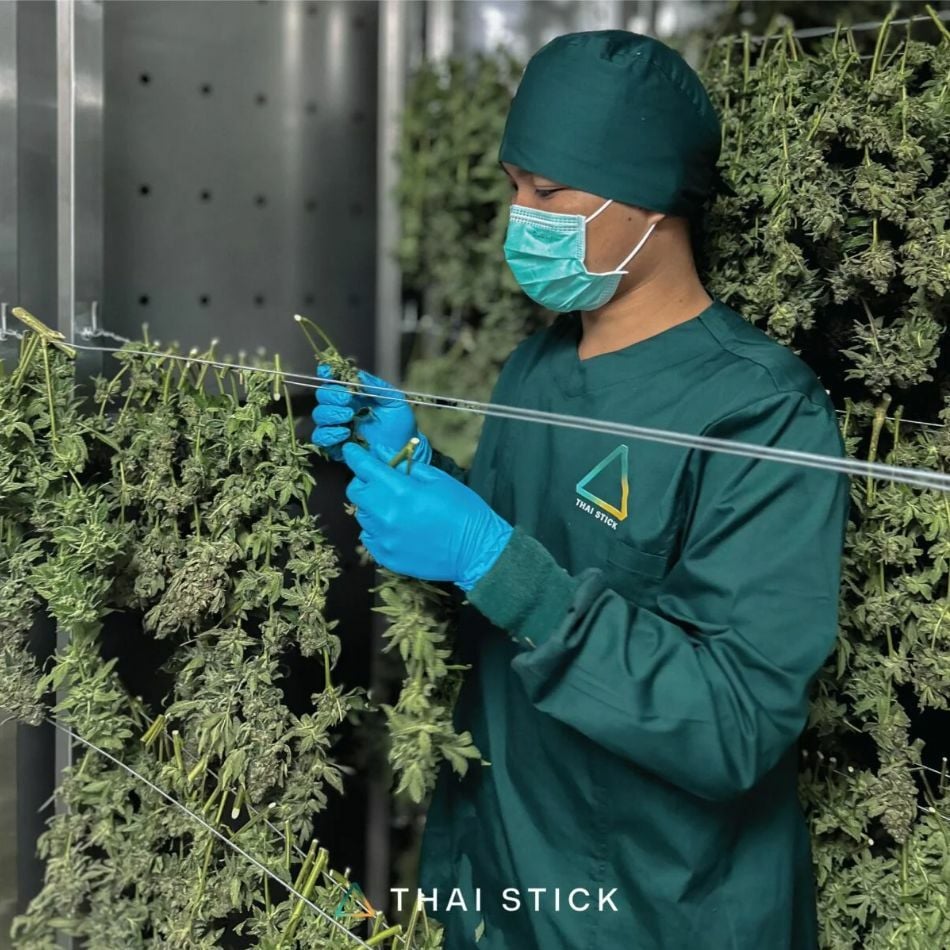Is cannabis really safe? Here’s what you need to know

Thai society’s views on cannabis continue to change for the better as the industry grows. More and more people are starting to embrace the plant for its medicinal and holistic wellness benefits. But despite growing acceptance, some stigma and perception persists, especially with government plans to outlaw cannabis again in the near future.
The uncertainty isn’t unique to Thailand. Around the world, cannabis continues to be a hot topic in political, legal, and social discussions about its safety and benefits. Some swear by the plant’s benefits while others point out its potential downsides. Amid these debates, one question remains: Is cannabis safe to use and consume? Let’s find out.
Cannabis through historical studies and reports
Cannabis has been a therapeutic agent for centuries. In Thailand, evidence shows that the plant, known as “ganja,” has been used as part of Thai traditional medicine as early as the 1600s.

While cannabis research may not have been as extensive as that of tobacco, there has been a notable amount of research conducted to prove its safety. One of the first recorded studies on cannabis was found in 1894: the Indian Hemp Drugs Commission Report. The report, which was an Indo-British study on cannabis usage in India conducted for two years, found that moderate use of the plant didn’t cause any notable physical, mental, or moral harm.
More research continues, including the 1999 Institute of Medicine report about medical marijuana. It found that except for smoking risks, marijuana’s side effects are okay for medicine. This backs up the idea that cannabis can be used safely for medical reasons if controlled properly.
But, how relevant are these reports and studies today?
These reports are, of course, outdated. However, they were groundbreaking in their times and even influenced later research and public perception of cannabis. Since then, there has been a significant number of studies about cannabis.
In modern days, one of the most detailed looks at the scientific evidence on cannabis can be found in the 2017 review by the National Academies of Sciences, Engineering, and Medicine. They combed through over 10,000 studies published since 1999 and found some strong benefits to cannabis.

Furthermore, in 2023, the U.S. Department of Health and Human Services has called for the rescheduling of the classification of cannabis. What it means is that the Drug Enforcement Agency (DEA) has classified various drugs with a Schedule from V to I that determines their severity and ability to be sold at pharmacies. Schedule V drugs are classified as medications with the least potential for abuse such as pregabalin, diphenoxylate/atropine, dextromethorphan. Schedule I drugs have High abuse potential with no accepted medical use such as heroin, mescaline (peyote), lysergic acid diethylamide (LSD), methylenedioxymethamphetamine (MDMA), and cannabis at the time.
The U.S. Department of Health and Human Services argued that although cannabis had high abuse potential, it leads to substantially fewer negative outcomes than other forms of controlled substances. In determining a drug’s potential for abuse, they consider four criteria: (a) evidence that individuals take the drug in harmful amounts; (b) if there is a diversion of the drug from legitimate drug channels; (c) if individuals take the drug without medical advice; and (d) the drug’s similar properties to other drugs determined to have a potential for abuse.
With the recommendation, the DEA has officially rescheduled cannabis from a Schedule I drug to a Schedule III drug which has intermediate potential for abuse and includes examples such as anabolic steroids, testosterone, and ketamine. This ties in with the Biden administration pardoning the charges of those arrested for cannabis possession and also giving the chance for cannabis to be used for medical purposes with a medical prescription.
Cannabis is beneficial for adults who suffer from nausea and vomiting caused by chemotherapy. It’s also effective in reducing chronic pain in adults, as well as helping those dealing with multiple sclerosis-related spasticity. Plus, the US FDA has approved a CBD-based drug, Epidiolex, for the treatment of certain severe epilepsy forms.

However, similar to all other substances, cannabis carries its own set of risks. The same review indicates that although smoking cannabis may not raise the risk of certain cancers in adults, long-term smokers may experience more severe respiratory symptoms and frequent episodes of chronic bronchitis. Pregnant women who use cannabis may have babies with lower birth weights. Additionally, there is a higher likelihood of developing schizophrenia and other psychoses among cannabis users, as well as an increased risk of being involved in car accidents.
These risks are why in Thailand, and in many countries where cannabis is legalised, specific criteria are established to determine who can and cannot use or consume cannabis.
Can you overdose on cannabis?
The short answer is no, you can’t overdose on cannabis. The Centres for Disease Control and Prevention (CDC) reported that there haven’t been any reported deaths attributed to cannabis use. It’s generally safer than opioids, heroin, cocaine, alcohol, and even tobacco.
The concept of LD50, or the lethal dose required to kill 50% of a test population, illustrates this point. The LD50 for aspirin is 200 milligrams per kilogram. On the other hand, for common table salt, it is 3,000 milligrams per kilogram. For THC, the primary psychoactive compound in cannabis, the estimated LD50 is over 1,000 milligrams per kilogram. Therefore, it’s almost impossible to consume too much cannabis which would lead to unconsciousness or the inability to sustain your vital functions. An adult would need to consume an extraordinarily high dose to risk fatality.

This doesn’t mean that you can’t have a bad reaction to cannabis. Undesirable side effects, such as confusion, headaches, dry eyes, and dry mouth (thirstiness), can sometimes happen. These effects can persist for varying durations, ranging from 20 minutes to an entire day.
Typically, cannabis with higher THC levels is linked to more intense and prolonged consequences. It’s also possible to wake up with a residual effect known as a “weed hangover” the next day. However, experiencing bad reactions to cannabis doesn’t typically warrant a medical emergency. The key to avoiding these reactions is to make sure you’re not going overboard with how much you consume at once and give yourself some time to feel the effects before taking more.
Is it possible to get addicted to cannabis?
Some people consider cannabis to be addictive and a negative influence that can lead to further substance abuse. This debate has been ongoing for years.
For example, in 1944, New York City Mayor Fiorello La Guardia commissioned the New York Academy of Medicine to research claims that smoking cannabis was dangerous and addictive in response to the Marijuana Tax Act of 1937. The findings of the five-year research were striking: smoking cannabis didn’t lead to addiction or the use of harder drugs like heroin or cocaine. Numerous human clinical studies were also performed that same year. And they all reported that cannabis users didn’t experience any mental or physical deterioration.

Today, statistics have shown that people who use cannabis only have about a 10% likelihood of becoming addicted. This ‘addiction’ is known as cannabis use disorder. It’s characterised by persistent consumption despite negative consequences on health and social well-being. The likelihood of developing this disorder is higher among those who start using cannabis in their youth or adolescence (before the age of 18).
Moreover, unlike alcohol, where even occasional use can lead to issues, cannabis tends to cause problems for those who consume it daily and more frequently. This frequent consumption can transform cannabis, generally considered a relatively low-risk substance, into something harmful for certain individuals.
Cannabis is not a cure-all, but it’s not dangerous like opioids
Cannabis is not a cure-all, and like any other medication, it carries some level of risk. However, it’s important to note that cannabis is not as dangerous as opioids and heroin. It’s a relatively safe substance with potential medical advantages. Understanding its benefits and risks through a balanced lens is essential for informed discussions and policies surrounding its use.
Thai companies push for positive perception and medicinal education to rebrand cannabis
Some cannabis companies in Thailand, such as Thai Stick, are working to change the stigma surrounding cannabis by promoting a more positive image of the plant. They’re educating the public on the medicinal benefits of cannabis and introducing its potential to treat various health conditions. By doing so, they hope to steer away from the outdated view of cannabis as a harmful drug.

For further information and insights into how they are working to reshape attitudes towards cannabis in the country, visit Thai Stick’s website and follow them on Instagram.
Sponsored
Latest Thailand News
Follow The Thaiger on Google News:


























